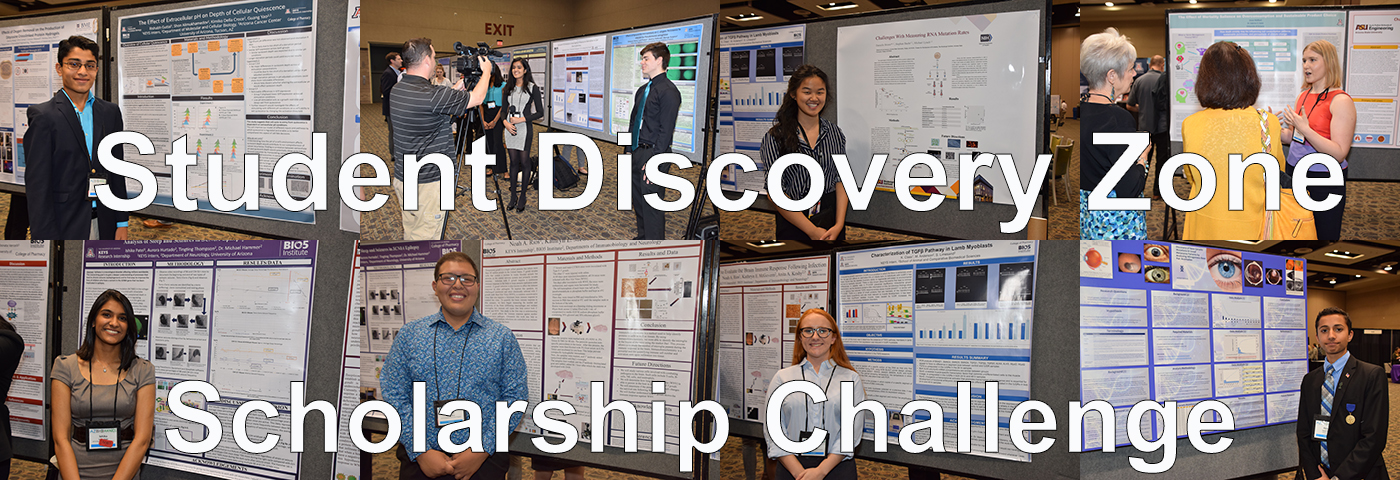
Arizona Bioscience Week Student Discovery Zone Goes Virtual!
Since it began in 2011, the Student Discovery Zone at the AZBio Awards has showcased the work of over 1,000 Arizona students. In 2021, we have developed a unique video based challenge format so that we can continue the tradition in the safest way possible.
Student Discovery Zone Challenge Scholarship Prizes:
High School Students:
- Technical Merit: First Place ($1,000), Second Place ($500), Third Place ($250)
- People's Choice Award based on online votes: $500.00
University Students:
- Technical Merit: First Place ($1,000), Second Place ($500), Third Place ($250)
- People's Choice Award based on online votes: $500.00
IN THE CASE OF A TIE WITHIN A CATEGORY, SCHOLARSHIPS WILL BE SHARED PROPORTIONALLY BY STUDENT WINNERS.
In accordance with IRS guidelines, any individual awards of $600 or more will be reported on form 1099-Misc.
The Student Discovery Zone is presented thanks to support from:
Congratulations to the 2021 Student Award Winners!
Scroll down to watch their videos. Click on the Student Name for more information on their project.
University Category:
1st place: Francisca Grill – Prize $1,000
2nd place: Rebecca Jernigan – Prize $500
3rd place: Tucker Stuart – Prize $250 – split $125
3rd place: Hasina Shir - Prize $250 – split $125
People's Choice - Justus Nwachukwu Prize $500
High School Category:
1st place: Katherine Wei – Prize $1,000
2nd place: Hersh Nanda – Prize $500
3rd place: Saathvika Vegasina – Prize $250
People’s Choice - Chloe Rozalsky - Prize $500



